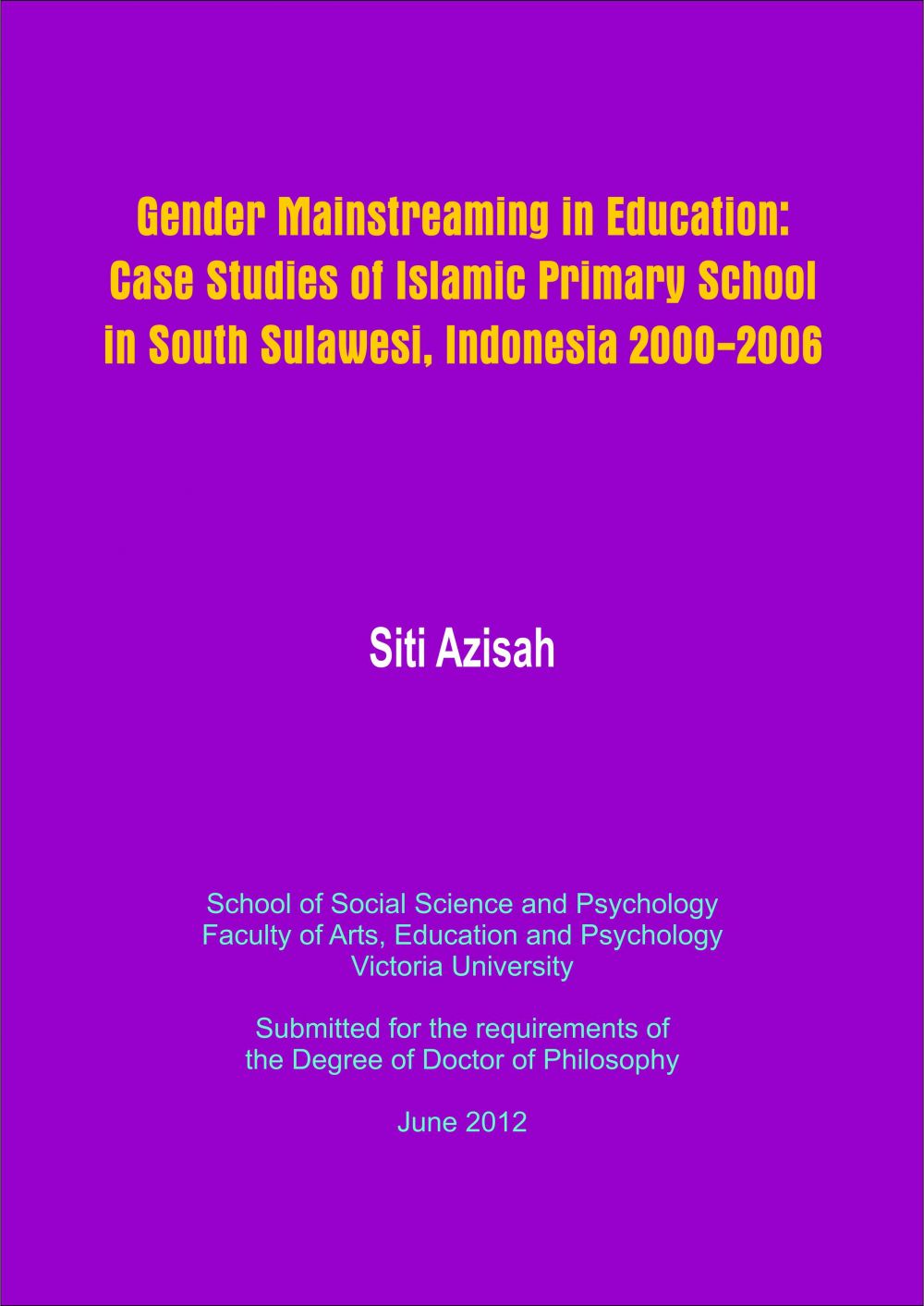Gender Mainstreaming in Education, Gender Mainstreaming in Muhammadiyah
Dibaca: 1186
Penulis : Siti Azisah
Gender Mainstreaming in Education:
Case Studies of Islamic Primary Schools in South Sulawesi, Indonesia 2000-2006
Siti Azisah
Abstract
This thesis examined the extent and the manner of the gender mainstreaming policy implementation in three Islamic primary schools in South Sulawesi, Indonesia. It investigated the commitment, gender ideology and practices of policy makers, school principals, teachers, and the school committees. Furthermore, the thesis analyzed gender roles depiction in the primary school textbooks as well as investigated the students‘ perception of gender roles.
The thesis argued that implementation of gender mainstreaming in Islamic education was varied. Firstly, in the government itself, the implementation of the gender mainstreaming policy was greater in the upper level than in the lower levels of the administration. Secondly, the Indonesian government‘s initiative to mainstream gender in primary school textbooks has shown some positive results, although the influence differed according to discipline, grade levels, schools and place of publication and the market. Thirdly, stereotyped gender role ideology and practices were shared by the three school communities, yet the patterns were different. The government school in the village was the most progressive. Whereas, the private schools in the town and the city were both less progressive. Fourthly, the students generally had similar views on gender roles although there were markedly different patterns of perceptions among them. Students of the state school engaged in the least stereotyping in their selection of famous people and their favourites among the famous as well as in their occupational aspirations, whereas the students of Muhammadiyah schools engaged in the most stereotyping.
The supporting factors of gender mainstreaming were reflected in the curriculum program and strategies, gender awareness training, and changes in social practices. Whereas, the hindering factors mostly come from cultural perspectives, the patriarchal values and the ambivalence of decision makers and teachers as well as the lack of opportunities for teachers from Islamic schools to participate in gender training workshops.
Table of Contents
Chapter 1
Introduction - 1
Chapter 2
Literature Review - 11
Chapter 3
Methodology - 51
Chapter 4
The Role of Women Activists for Gender Equality in Indonesia - 77
A. Introduction - 77
B. Indonesian Women Activists in the Late Colonial Era (1900-1945 - 77
C. Indonesian Women Activists and the New Order Government - 85
D. Women Activists at the Beginning of the Reformation Era - 89
E. The women Activists in the Reformation Era - 94
F. Conclusion - 98
Chapter 5
Gender Mainstreaming Policy Development in Indonesia - 100
A. Introduction - 100
B. The Global and Local Gender Issues - 100
C. The Presidential Instruction on Gender Mainstreaming Policy - 106
D. Gender Mainstreaming in Education - 112
E. Implementation of Gender Mainstreaming in Education in the Ministry of National Education - 117
F. Gender Mainstreaming in the Department of Religion - 123
G. Gender Mainstreaming in Muhammadiyah - 129
H. Gender Mainstreaming in As‘adiyah Institution - 134
I. Conclusion - 135
Chapter 6
Gender Role Depiction in Islamic Primary School Textbooks - 137
A. Introduction - 137
B. Gender Depiction in each Discipline - 138
C. Year of Publication: before and after 2004 - 146
D. Grade Level Comparisons - 147
E. Place of Publication and Market - 148
F. School Comparison - 150
G. Conclusion - 153
Chapter 7
Gender Roles in Islamic Primary Schools - 156
A. Introduction - 156
B. The State Islamic Primary Schools - 158
C. As‘adiyah Islamic Primary School - 168
D. Muhammadiyah Islamic Primary School - 183
E. Conclusion - 206
Chapter 8
Students‘ perceptions on gender roles - 211
A. Introduction - 211
B. Gender-Neutral and Non-Stereotyped Views of Gender Roles - 212
C. Stereotyped Views on Gender Roles - 221
D. The Comparison of Students‘ Views from the Three Schools - 233
F. Conclusion - 238
Chapter 9
Conclusion - 241
Bibliography - 269
Tags: GenderMainstreaminginEducationCaseStudiesofIslamicPrimarySchoolsinSouthSulawesi , Indonesia2000-2006 , SitiAzisah








